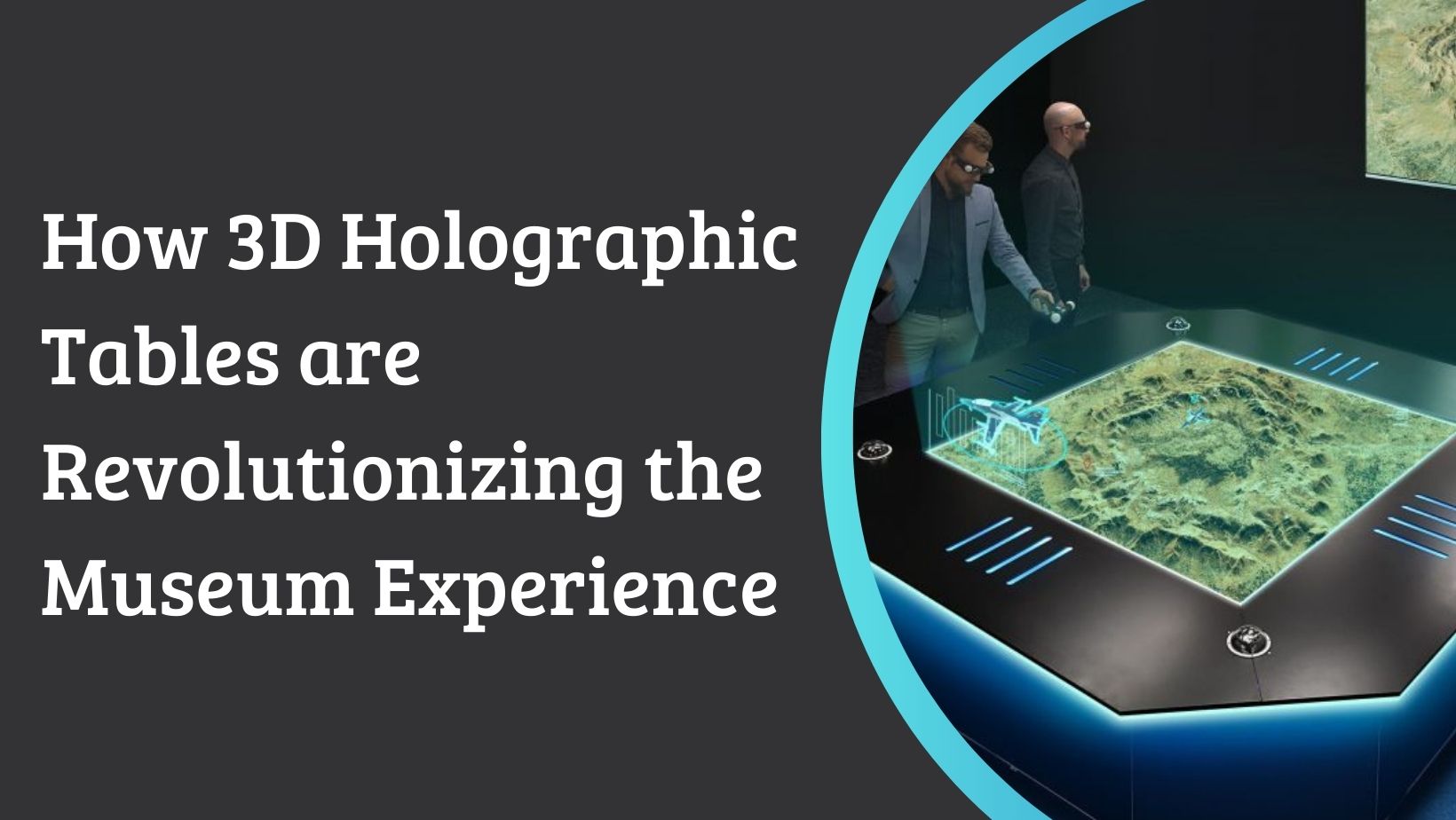Museums have always been fascinating places, showcasing our history, art, and culture. But now, they’re undergoing a remarkable transformation thanks to 3D hologram tables. These innovative devices are revolutionizing the Holographic Tables museum experience in ways we could only dream of before. In this article, we will explain how 3D holographic tables are changing the museum night for viewers.
What are 3D Holographic Tables?
Firstly, let’s talk about how creating holograms is changing the game when it comes to preserving and displaying delicate artifacts. In the past, museums had to keep many precious items locked away to protect them from damage. But with holographic technology, these items can be recreated virtually in stunning detail. Visitors can get up close and personal with these virtual replicas without risking harm to the real thing. It’s like having a time machine that lets you explore ancient treasures without any worries.
Factors Responsible for Modifying Virtual Museum Experience
The Fusion of Art and Technology
The interactive nature of 3D holographic tables is another game-changer. Traditional museum exhibits often feel static—you look, you read, but there’s limited engagement. With holographic tables, you can interact with exhibits in a whole new way. Imagine touching a virtual dinosaur bone and watching it come to life, or exploring an ancient city by zooming in and out of its streets. It’s a hands-on experience that makes learning incredibly fun and memorable.
Accessibility
Accessibility is also a big part of this revolution. Museums want to welcome everyone, regardless of age, language, or physical ability. Holographic tables make this possible by offering features like multilingual support, audio descriptions, and customizable interfaces. Now, people from all walks of life can enjoy and learn from museum exhibits in a way that suits them best with digital twins.
Flexibility
One of the most exciting aspects of holographic technology is its flexibility. Museums can create dynamic, ever-changing exhibits without the need for constant physical renovations. Want to switch from an ancient civilization exhibit to a space exploration theme? No problem. Hologram tables make it easy to update content, add new information, and keep visitors coming back for more.
But the impact of 3D holographic tables goes beyond just museums. Schools and educational institutions are also embracing this technology to enhance learning experiences. Imagine a classroom where students can step inside historical events or explore scientific concepts in 3D. It’s a game-changer for education, sparking curiosity and deepening understanding like never before.
Collaboration and Research
Collaboration and research benefit greatly from creating holograms too. Experts can work together remotely, share findings, and collaborate on projects with a level of immersion that was previously impossible. This not only advances our knowledge but also fosters a sense of global cooperation in preserving and studying our cultural heritage.
Adopting 3D holographic technology isn’t possible without challenges. Cost can be a barrier for some museums, and ongoing maintenance and training are necessary to keep everything running smoothly. Privacy and data security are also important considerations, especially when dealing with interactive exhibits and visitor information.
Characteristics of 3D Hologram Tables
- Immersive Display – 3D hologram tables provide real visuals demonstrated into the air offering an engaging watching insight.
- Interactive Interface – Viewers can engage with holographic pictures via gestures or touch boosting usability and interaction.
- Multi-User Collaboration – These 3D tables project associative tasks by accessing several users to engage with holograms simultaneously.
- Versatile Applications – 3D holographic tables explore their usability in multiple industries from entertainment, gaming, education and professional demonstrations.
- Real-time Rendering – Modern techniques allow real-time depiction of 3D content assuring dynamic and smooth holographic displays.
- Futuristic Aesthetics – The wonderful holographic table design attaches a futuristic touch to any atmosphere combined with multiple functions.
Conclusion
So, 3D holographic tables are reshaping the museum experience in profound ways. Digital twins exhibit more engagement, accessibility, and adaptability than ever. While there are challenges to overcome, the benefits far outweigh them. We’re entering a new era of museum exploration—one where the past meets the future and learning becomes an immersive adventure for all. To learn more about 3D holographic displays, connect with Vision3D customer care number – +91-8971953451.
